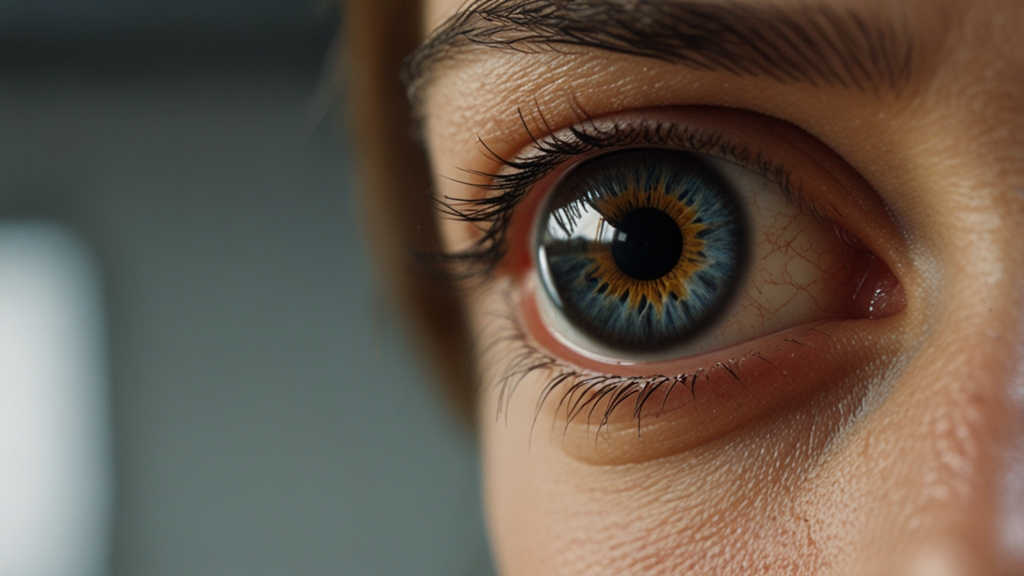Introduction
Contents
Eye disease, glaucoma, remains one of the most significant conditions affecting the human body. When left untreated, it progresses to complete blindness. Glaucoma damages the optic nerve, which receives information needed for visual perception. The Oettl paper 2017 AOS outlines glaucoma’s beginnings and root causes and doctor methods for detecting its presence. The research findings enable better medical intervention at an early disease stage.
What Is Glaucoma?
Glaucoma hides behind its nickname, the “silent thief.” Glaucoma starts without visible warning during its beginning stages. The majority of glaucoma victims do not recognize they carry the disease. The disease remains unseen until damage leads to vision loss. Glaucoma destroys the optic nerve while it steadily erodes vision ability. Detecting glaucoma early enables you to defend your eyesight.
What Increases the Risk of Glaucoma?
A study published in 2017 AOS by Oettl explains that certain conditions raise the prospect of developing glaucoma. Acting on this knowledge leads to eye protection.
Family History
A family history of glaucoma increases your risk of developing this disease. A routine eye checkup during the early stages enables physicians to detect glaucoma.
Nearsightedness (Myopia)
Glaucoma incidence increases with the extent of myopia. People who struggle with nearsightedness should have their eyes checked routinely.
Age
Glaucoma affects people 60 years or older with increased frequency. As people age, regular deterioration occurs in eye functions.
High Eye Pressure
Glaucoma is mainly caused by increased eye pressure. When eye pressure remains at low levels, the risk of optic nerve damage decreases.
Why Is Glaucoma Hard to Find Early?
The early signs of glaucoma remain challenging for most patients. Because it doesn’t cause noticeable symptoms, most people do not identify their glaucoma until it damages their sight. Doctors now possess instruments that enable them to detect glaucoma at its earliest stages, helping prevent permanent damage.
How Do Doctors Detect Glaucoma?
Doctors perform specific tests to detect glaucoma before it causes any vision loss. These tests help catch the disease before it harms your vision:
Visual Field Tests
Tests will determine if loss of vision appears after your procedure.
Optical Coherence Tomography (OCT)
Using OCT, doctors acquire detailed visual images of optic nerve structure. The special tests enable doctors to view optic nerve damage before it causes permanent harm.
Corneal Thickness Test
This diagnostic method measures your cornea’s thickness. People with thicker corneal structures are more likely to develop glaucoma.
How Can You Manage Glaucoma?
The Oettl paper 2017 AOS, demonstrates that glaucoma management requires prompt detection practices, appropriate treatments, and lifestyle improvements.
Get Regular Eye Exams
Regular eye examinations should be the standard medical practice for every person. Get frequent eye examinations from your doctor when you have glaucoma in your family history or when you reach sixty years of age.
Follow Your Treatment Plan
Your doctor will help you establish treatment options that match your requirements.
Healthy Habits
Simple habits help protect your eyes:
Exercise: Regular exercise helps control the pressure inside your eyes.
Eat Well: Eye health receives support from fish alongside leafy greens as part of a healthy diet.

What’s Next for Glaucoma Research?
The Oettl paper 2017 AOS points out two important areas of research:
Genetics
Glaucoma detection becomes easier when scientists uncover genetic factors that trigger this eye condition.
Better Tools
Medical technologies involving OCT combined with artificial intelligence enable doctors to diagnose early glaucoma and deliver improved treatment strategies.
Conclusion
This study, led by Oettl paper 2017 AOS, demonstrates the approach to managing glaucoma. Early detection, in combination with proper treatment and healthy lifestyle choices, will work to secure your vision. Evolving research techniques are creating better ways to treat glaucoma cases. Visiting your eye doctor regularly, combined with risk awareness, helps keep your vision protected.


